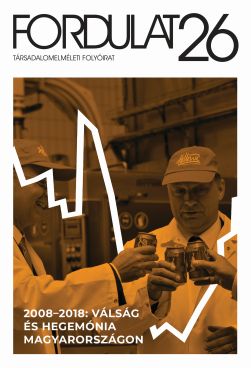Magyarország az európai munkamegosztásban. A termelés áthelyezése a globális járműipari értékláncokban
Hungary in the European Division of Labour: Relocations in the Global Automotive Value Chains
Author(s): András Pinkasz, Tamás GerőcsSubject(s): Politics / Political Sciences, Economy, Governance, Sociology, Welfare systems, Political economy, Rural and urban sociology, Radical sociology , Welfare services, Globalization
Published by: Fordulat
Keywords: automotive industry;car production;division of labour;relocation;value chains;global capitalism;Comecon;ECE;German automotive value chains;German neomercantilism;
Summary/Abstract: The world economic reintegration of the East and Central European (ECE) region started in the midst of the global crises and the subsequent restructuring in the international division of labour in the 1970s. However, the region’s economic and financial dependence on the capitalist world system did not become apparent until the political regime change in 1990 and the collapse of Comecon in 1991. The consolidation of the new international division of labor was completed after the world economic crisis in 2008. Ever since the 1970s, the ECE region’s economic integration was determined by both external and internal factors. The authors strongly emphasize both the changes in the technological development that affected their access to the state of the art technologies and the reorganization of the Western European production networks around which neomercantilist institutions in the whole of the European Union has dominated. The overproduction crisis manifest in the production of the combustion engines and the increasing presence of the electric vehicles resulted in the re-organization of the German automotive value chains in the region. Due to the increasingly standardized production processes and their deteriorating ability to produce high value-added products, relocation from Germany to ECE accelerated since 2008 upon which a new semi-peripheral accumulation regime has emerged that serves the interests of German capital and reproduces ECE’s historical dependency on external finance and technology. The economic policies of the Hungarian government is understood in this context as the peripheral version of the German neomercantilist model.
Journal: Fordulat (2008-tól Új Folyam)
- Issue Year: 2019
- Issue No: 26
- Page Range: 172-198
- Page Count: 27
- Language: Hungarian

